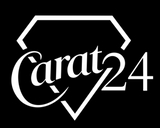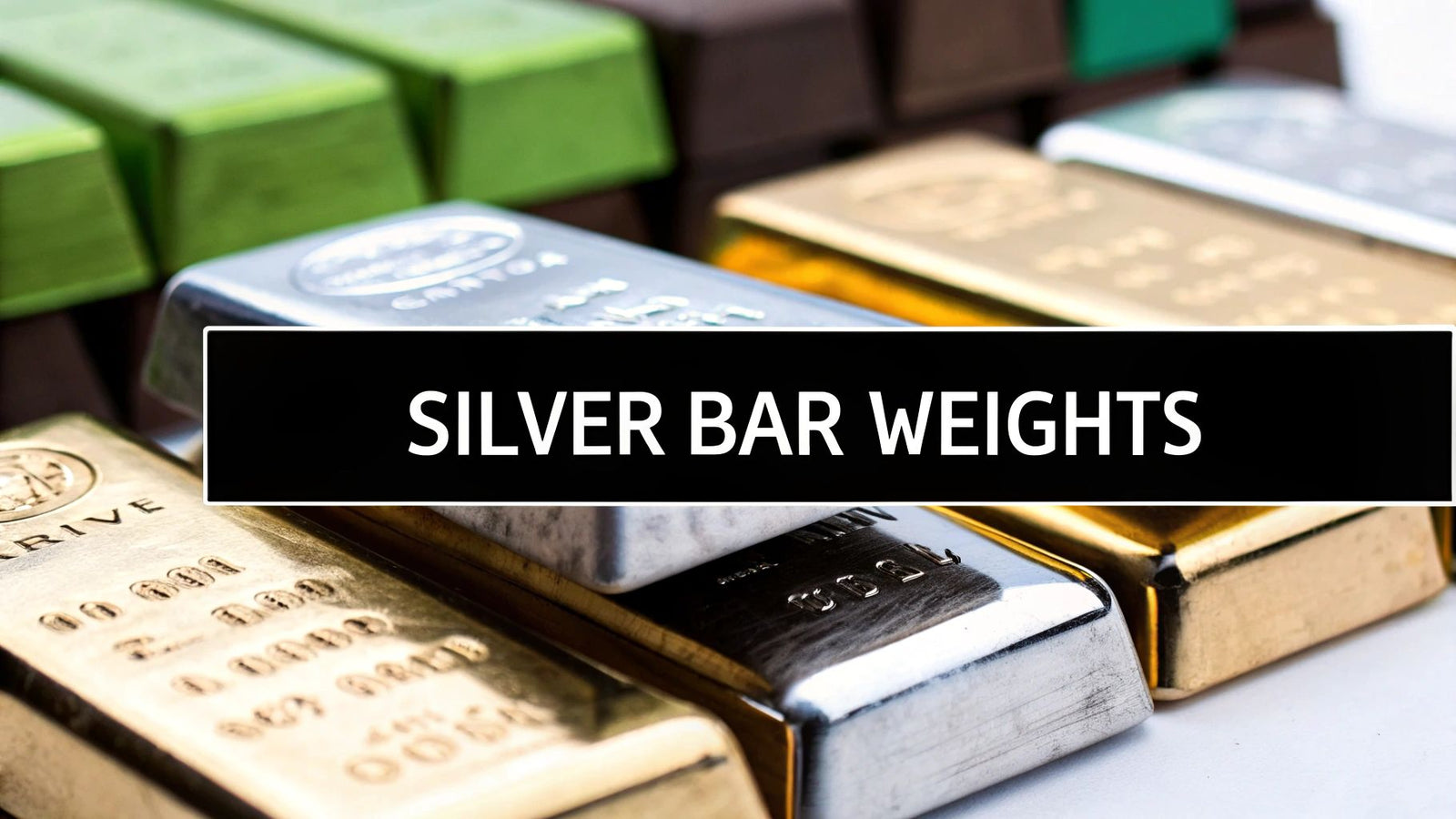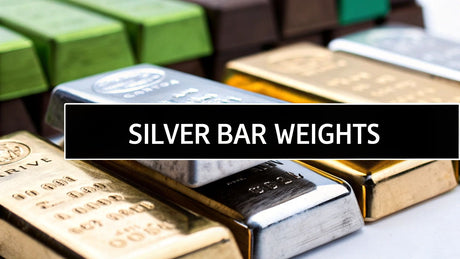When you're first getting into silver, one of the most common questions is straightforward: "How much do silver bars weigh?" The answer, as you might guess, isn't quite so simple. Silver bars are produced in a massive range of weights, from tiny one-gram pieces perfect for gifting all the way up to huge 1,000 troy ounce bars traded by banks and institutional players.
For most individual investors, the sweet spot lies somewhere in the middle. The most popular and widely traded sizes you'll encounter are the 1 troy ounce (31.1 grams), 10 troy ounce (311 grams), and the hefty 100 troy ounce (3,110 grams) bars. It's absolutely crucial to remember that precious metals are measured in troy ounces, a special unit of weight that's different from the standard "avoirdupois" ounce we use for things like groceries.
An Overview of Standard Silver Bar Weights
The right silver bar for you really comes down to your personal investment strategy and budget. Mints and refiners produce this wide variety of sizes for a reason—each one strikes a different balance between affordability, ease of resale (liquidity), and overall value.
Getting a handle on these common weights is the first step to making a smart buy or a profitable sale. Whether you're stacking investment-grade bullion or looking to sell some silver, gold, or jewelry you've acquired, knowing the exact weight is fundamental to calculating its true market value.
This chart really puts the physical size difference into perspective, showing the gram weight for three of the most common silver bar sizes.

As you can see, the jump from one size to the next is pretty substantial. Thinking about selling silver you already own? If you're local to the Boise area, you can save the hassle and sell locally for more than online shipments. We specialize in Gold and Jewelry Buying, providing hassle-free offers with free X-ray scanning and metals testing right here in our secure location. Our price matching guarantee ensures you always get the highest payout in Boise.
To make things even clearer, here’s a quick reference table that breaks down the most popular silver bar weights and their conversions.
Quick Guide to Common Silver Bar Weights
This table provides a simple summary of common silver bar weights, converting them into the key units you'll encounter in the precious metals market: troy ounces, grams, and kilograms.
| Common Weight | Troy Ounces (oz t) | Grams (g) | Kilograms (kg) |
|---|---|---|---|
| 1 Gram Bar | 0.032 | 1 | 0.001 |
| 1 Troy Ounce Bar | 1 | 31.1 | 0.0311 |
| 10 Troy Ounce Bar | 10 | 311 | 0.311 |
| 100 Troy Ounce Bar | 100 | 3,110 | 3.11 |
| 1 Kilogram Bar | 32.15 | 1,000 | 1 |
Having these conversions handy can be incredibly useful, whether you're comparing prices online from international dealers who price by the gram or you're trying to calculate the total weight of your holdings.
Popular Silver Bar Sizes for Smart Investing

Silver bars come in a whole host of weights, but investors almost always gravitate toward a few specific sizes. These fan favorites offer the best mix of value, liquidity, and storage convenience. Knowing the common weights of silver bars is your first step to building a solid portfolio that works for you. The most popular choices are easily the 1 oz, 10 oz, and 100 oz bars, with each serving a different purpose in an investment strategy.
The 1 oz silver bar, for instance, is the perfect entry point. Its low price makes it incredibly accessible for newcomers, and its small, standardized size means it's a breeze to sell or trade when the time comes. Moving up the ladder, the 10 oz bar is what many consider the "sweet spot." It gives you a lower premium over the spot price compared to buying ten individual 1 oz bars, but it’s still highly liquid and easy to handle.
Balancing Premiums and Manageability
For those looking to invest more significant sums, the 100 oz bar is a go-to option. This larger size dramatically cuts down the premium you pay per ounce, which means you're getting the most silver for your money. The trade-off, of course, is that its higher total cost makes it less practical for smaller, quick transactions.
Another fantastic choice that bridges the gap is the 1-kilogram bar, which is about 32.15 troy ounces. Mints produce a wide range of weights—from tiny 1-gram bars all the way up to massive 15-kilogram behemoths—to meet every investor's needs. The 1-kilo size is especially popular because it strikes a great balance between a manageable size and a much more favorable premium than its smaller counterparts.
When it’s time to sell, knowing the exact weight of what you're holding is absolutely critical. If you're local to Boise, you can skip the hassle and risk of shipping your metal online. Selling locally almost always gets you a better payout, and we offer the highest payout in Boise for all your Gold and Jewelry Buying needs with free X-ray Scanning for all your gold, silver, and jewelry.
Ultimately, the right bar size comes down to your personal investment goals. To learn more about the nuances of precious metals, take a look at our comprehensive guide on https://carat24boise.com/blogs/coins-and-bullion-information.
When you move past the silver bars most individual investors are familiar with, you enter the world of institutional giants. These are the massive bars that really form the foundation of the global silver market. We're talking about the heavyweights used by central banks, commodity exchanges like COMEX, and major financial institutions for trading and holding in their reserves.
Getting a handle on these behemoths gives you a real insider's view on how much silver bars can weigh at the highest levels of finance and trade.
The undisputed king in this category is the 1,000 troy ounce Good Delivery bar. Forget the sleek, polished bars you see in pictures; these are industrial workhorses. They often look rough and are shaped more like a loaf of bread than a refined bullion product. Their sheer size and value make them totally impractical for private investors—imagine trying to store one, let alone sell it outside of institutional channels.
Specifications for Good Delivery Bars
To even be considered for trading on major exchanges, these bars have to meet some incredibly strict standards. The benchmark weight for a silver bar under the COMEX Good Delivery specification is 1,000 troy ounces (that’s about 31.1 kilograms), though there's an allowed variance of ±10%.
They also have to be incredibly pure, with a minimum fineness of 999 parts per thousand. This guarantees they are 99.9% pure silver. Each bar is stamped with its exact weight, fineness, a unique serial number, and the refinery's brand. Newer rules even require the manufacturing date to improve traceability across the market. You can explore more details about these important precious metals standards to see just how vital they are.
While you'll probably never hold one yourself, knowing about these 1,000 oz bars helps you understand how silver is priced and traded on a global scale. Now, if you have any type of silver, gold, or jewelry you're looking to sell, you don’t have to deal with the hassle and risk of shipping it off and just hoping for the best.
When you sell locally here in Boise, you can get a better payout without the stress. We offer straightforward, hassle-free offers with free X-ray scanning and Gold Testing. This ensures you get the highest payout in Boise for your items, and we back it up with our Price Matching guarantee.
How Purity and Dimensions Define a Silver Bar

While the weight of a silver bar is the first thing most people look at, the story doesn't stop there. A bar's purity, often called its "fineness," is what truly tells you how much pure silver you're holding. It's a critical detail stamped right onto the bar itself.
You’ll typically see markings like .999 or the even more refined .9999. These numbers mean the bar is 99.9% or 99.99% pure silver, respectively—a standard that any serious investment-grade bullion must meet. This high level of purity is quite different from older silver items, especially certain coins that often had lower silver content. If you're curious about that side of things, our guide on identifying valuable coins from 1964 and earlier is a great place to start.
Cast vs. Minted Bar Dimensions
Beyond purity, it’s interesting to note that two silver bars of the exact same weight can have different physical dimensions. This all comes down to how they were made, a process that usually falls into one of two camps: cast or minted.
- Cast Bars: These are created the old-fashioned way—by pouring molten silver directly into a mold. The result is a more rustic, organic-looking bar where no two are perfectly identical.
- Minted Bars: These are precision-cut from a larger, uniform sheet of silver and then stamped with a design. This method produces a bar with a much cleaner finish, sharper edges, and a consistent shape.
A 10 oz cast bar and a 10 oz minted bar both have exactly 10 troy ounces of pure silver, but their length, width, and thickness will almost certainly be different. This might seem like a small detail, but it’s a crucial one to consider when you're planning for secure storage.
If you have any silver bars, coins, or jewelry and you’re not sure about their purity or what they're worth, just bring them in. Here at our Boise shop, we specialize in Gold and Jewelry Buying and offer free X-ray scanning and Gold Testing. We believe in hassle-free, transparent offers and guarantee the highest payout in Boise, so you can sell locally with confidence instead of dealing with the risks of shipping online.
Troy Ounces vs. Avoirdupois Ounces
When you start digging into how much silver bars weigh, one of the first things you’ll run into is a crucial detail that trips up a lot of new investors: the unit of measurement. The entire precious metals world operates on the troy ounce, an old system that’s completely different from the standard ounce you see on a kitchen scale. That everyday ounce is officially called the avoirdupois ounce.
Getting this wrong is a common, and often expensive, mistake. A troy ounce is actually heavier than a standard ounce, and that difference can have a huge impact on the value of any deal you make.
Comparing the Weight Systems
The difference between these two units isn't just trivia; it's precise and absolutely essential for getting an accurate valuation. Understanding the math behind it is how you make sure you’re getting exactly what you pay for, whether you're buying or selling.
Here’s the breakdown:
- 1 Troy Ounce (oz t) = 31.1 grams
- 1 Avoirdupois Ounce (oz) = 28.35 grams
What this means is that a troy ounce is nearly 10% heavier than a regular ounce. When you see a 10 oz silver bar listed for sale, that's 10 troy ounces—not the same ounces used for measuring your groceries. This is vital for calculating the real value of your silver, especially when you're dealing with larger quantities. To see this in action, you can learn more about the specific value of a 5 oz silver bar and see exactly how the troy ounce system affects its price.
If you're in the Boise area and thinking about selling silver, gold, or jewelry, this is exactly the kind of detail we help clarify. We give hassle-free offers with free Xray scanning and Gold Testing to make sure our offers are totally transparent and accurate. Don't risk shipping your valuables online; selling locally means a higher payout, and we back it up with our Price Matching guarantee to ensure the highest payout in Boise.
Selling Your Silver in Boise for the Highest Payout

Once you have a good handle on what your silver bars weigh, the next question is how to get the most value out of them. While you'll see plenty of online buyers promising a quick sale, my experience has shown that selling locally in Boise almost always secures a better price. You save the hassle and sell locally for more than online shipments.
Working with a trusted local expert means you get a transparent, face-to-face transaction. We've streamlined the entire process to make it simple. Our team provides free, on-the-spot assessments using state-of-the-art X-ray scanning and testing technology for all Gold and Jewelry Buying. This isn't guesswork; it's a precise, fair valuation with a hassle-free offer, so you know exactly what your items are truly worth.
Why Selling Locally Is Better
- Immediate Payout: Why wait for a check in the mail or a bank transfer to clear? Get paid right away.
- No Shipping Risks: Don't stress about your valuable silver, gold, or jewelry getting lost or damaged in transit. It happens.
- Transparent Evaluation: You can watch us test and weigh everything right in front of you. No mysteries, just honest numbers.
Our commitment is to give you the highest payout in Boise, period. We're so confident in our pricing that we offer a Price Matching guarantee, ensuring you always walk away with the best possible offer for your valuables.
When you sell locally, you’re not just getting a better price; you're getting peace of mind. To keep up with what your items might be worth, you can follow our regularly updated guide on precious metals price updates.
A Few Common Questions About Silver Bar Weights
Once you get the basics down, a few practical questions always seem to pop up for both investors and sellers. Let's tackle some of the most common ones to give you a complete picture.
What Is the Best Weight Silver Bar to Buy for a Beginner?
For anyone just starting out, 1 oz and 10 oz silver bars are usually the best entry points. They're affordable, don't take up much space, and are incredibly liquid—meaning they're always easy to sell when you need to. These smaller sizes let you dip your toes into the market without needing a huge amount of capital upfront.
Does the Brand or Mint Affect the Weight of a Silver Bar?
No, the brand or mint has no effect on the actual silver content. A 10 troy ounce bar from one trusted mint will have the exact same amount of pure silver as a 10 troy ounce bar from another. What the brand does affect, however, is the premium you pay over the spot price. Big, well-known mints often carry a slightly higher price tag because of their solid reputation.
Why Do Some 100 Oz Silver Bars Look Different in Size?
It's common to see 100 oz silver bars with different dimensions, and this usually comes down to the manufacturer and how the bar was made. You'll see the biggest difference between cast and minted bars.
- Cast Bars: These are created by pouring molten silver straight into a mold. This process often gives them a more rugged, less uniform look and feel.
- Minted Bars: These are precisely cut from a larger silver bar and then stamped with a design. The result is a much cleaner, more uniform shape and finish.
Even though they might look different, both types contain exactly 100 troy ounces of pure silver. The world of precious metals is full of fascinating details like this; for instance, you can learn more about the curious attraction of executive coins in Meridian, Idaho in another one of our articles.
When you're ready to sell your silver, gold, or jewelry, understanding its true value is key. Instead of dealing with online shipments, sell locally here in Boise for more money and zero risk. We offer hassle-free, transparent offers with free Xray scanning and Gold Testing, ensuring you get the highest payout in Boise.
Ready to unlock the value of your precious metals? Visit Carat 24 - Trusted Gold Experts today for a free, no-obligation evaluation. We guarantee the highest payout in Boise with our Price Match promise. Come see us at our secure location and get paid on the spot. https://carat24boise.com


